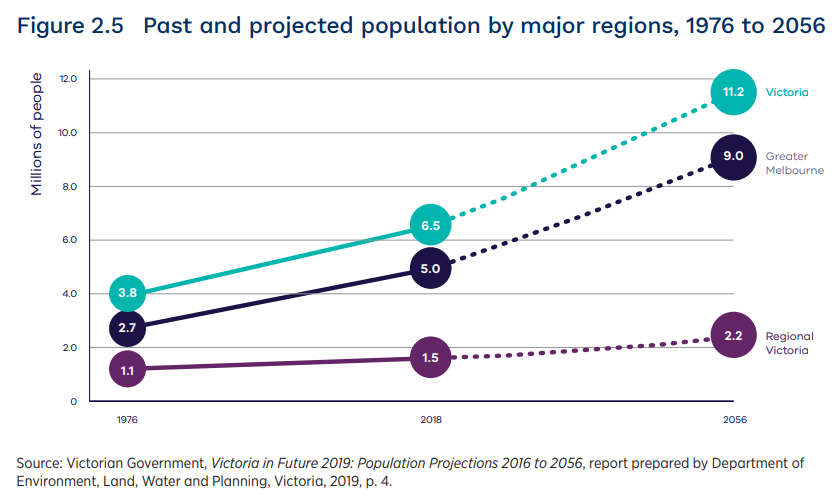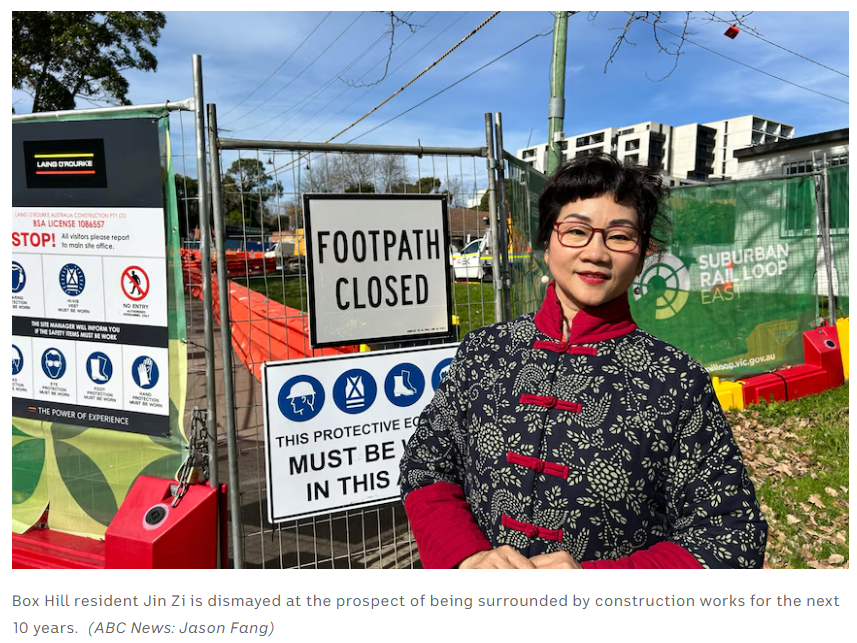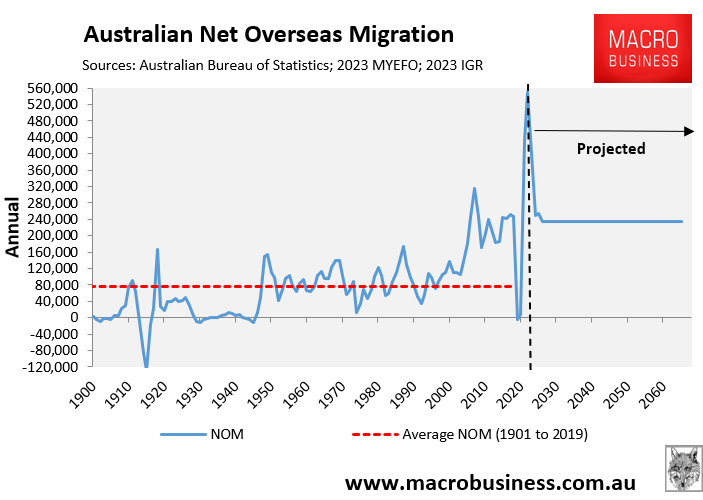Melbourne’s population has ballooned by around 1.8 million people this century.
The city’s population is also officially projected to grow by another 3.7 million to 9.0 million by 2056:

It took Melbourne around 170 years to reach a population of around 3.5 million at the turn of the century.
If these projections come to fruition, it would mean that Melbourne’s population would have grown by 5.5 million people in only 56 years.
The impact on Melbourne’s liveability has already been disastrous.
Melburnians have given up the opportunity to live in detached houses with backyards for cramped, overpriced apartments.
Melbourne’s economic and social infrastructure is perennially crush-loaded, resulting in congested roads, shortages of hospital beds, chronic ambulance ramping, overcrowded classrooms, and a lack of open space.
The city has also turned into a 24-hour construction site, with green space forever lost to encroaching development.
Indeed, a recent SGS Economics & Planning study warned that Melbourne could have 25% less open space per person within two decades, endangering the city’s “garden state” reputation.
The Victorian government has set a target of building 2 million new dwellings by 2051 to keep up with the state’s rapid population growth.
The 2021 Census stated that Melbourne had 2,057,482 dwellings, whereas Victoria had 2,805,661.
Therefore, in only 30 years, Victoria is projected to record a 71% increase in dwellings, primarily apartments.
The Age last year noted the loss of amenity that would arise under the state government’s plan to shoehorn one million homes into established suburbs:
“Considering there are currently about 2.1 million dwellings in Greater Melbourne, hitting the target will require roughly one new dwelling for every two existing homes within the city’s boundaries”.
“Having taken about 188 years to get to our current situation, accommodating 50% more houses within existing boundaries in the next 20 years represents a major policy challenge”.
Green space would be obliterated as housing density chops down trees and chews up lawns and gardens.
Last week, RMIT professors Michael Buxton and David Hayward took aim at the transformation of Melbourne into an “Asian-style megacity”:

Melbourne has changed greatly over the past 70 years, but now the state government plans to obliterate the city we know and value. The government has embarked on a quarter-century-long project to demolish much of the existing urban area and build a new city of high and medium-rise apartments.
This is a city-rebuilding model familiar in Asian, particularly Chinese, megacities, though few modern Western cities have adopted it…
There is no “missing middle” of housing supply. Massive redevelopment has already occurred in the 13 middle-ring suburbs generally extending between five and 15 kilometres from the CBD. In the 30 years to 2021, 318,000 homes were built in Melbourne’s 15 main inner and middle-ring municipalities, increasing their housing by 55%. About 90% of this was medium and higher-density housing. If achieved, the government’s new housing targets would reduce the proportion of detached housing there to under 33%….
The new housing targets propose 2 million additional homes in Melbourne by 2051, almost doubling the existing supply. The middle-ring suburbs would continue to bear most of the burden of new construction at 740,000 new dwellings or 37% of the total, compared with 610,000 in the new outer growth corridors.
The growing pains are so acute that even the migrant communities are complaining:

Jin Zi has enjoyed life in Box Hill for more than a decade.
A few years ago, Ms Jin, who is in her 60s, purchased an apartment opposite Box Hill Gardens, a popular green park, close to shops and public transport, to enjoy her “golden years”.
Now, everywhere she turns, she is surrounded by construction.
“It is extremely inconvenient at the moment,” Ms Jin said.
“Finding a parking spot in the area has become nearly impossible”…
“With the amount of construction that’s going on in Box Hill, I’m concerned about a generation of kids that will grow up knowing large parts of Box Hill as just a construction site,” Cr Barker said.
“We are just the first municipality to go through this.”
Ultimately, the destruction of Melbourne is guaranteed if the federal government continues ‘Big Australia’ mass immigration.

The 3.7 million new residents projected for Melbourne over the next 39 years will need to live somewhere.
High-rise living will inevitably become the future for Melburnians.
The solution is simple: slash immigration and stop growing Melbourne like an out-of-control science experiment.

